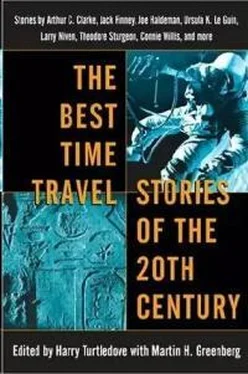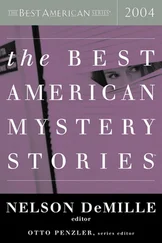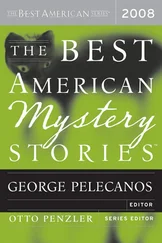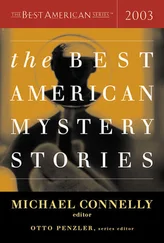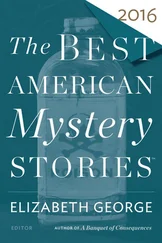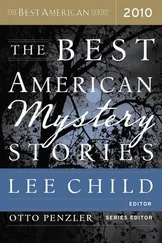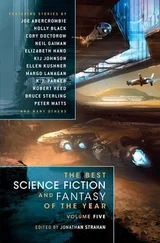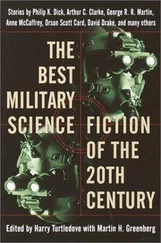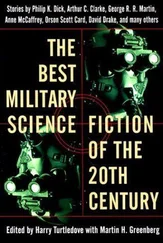Мартин Гринберг - The Best Time Travel Stories of the 20th Century
Здесь есть возможность читать онлайн «Мартин Гринберг - The Best Time Travel Stories of the 20th Century» весь текст электронной книги совершенно бесплатно (целиком полную версию без сокращений). В некоторых случаях можно слушать аудио, скачать через торрент в формате fb2 и присутствует краткое содержание. Год выпуска: 2005, ISBN: 2005, Издательство: Del Rey / Ballantine, Жанр: Фантастика и фэнтези, на английском языке. Описание произведения, (предисловие) а так же отзывы посетителей доступны на портале библиотеки ЛибКат.
- Название:The Best Time Travel Stories of the 20th Century
- Автор:
- Издательство:Del Rey / Ballantine
- Жанр:
- Год:2005
- ISBN:0-345-46094-4
- Рейтинг книги:3 / 5. Голосов: 1
-
Избранное:Добавить в избранное
- Отзывы:
-
Ваша оценка:
- 60
- 1
- 2
- 3
- 4
- 5
The Best Time Travel Stories of the 20th Century: краткое содержание, описание и аннотация
Предлагаем к чтению аннотацию, описание, краткое содержание или предисловие (зависит от того, что написал сам автор книги «The Best Time Travel Stories of the 20th Century»). Если вы не нашли необходимую информацию о книге — напишите в комментариях, мы постараемся отыскать её.
The Best Time Travel Stories of the 20th Century — читать онлайн бесплатно полную книгу (весь текст) целиком
Ниже представлен текст книги, разбитый по страницам. Система сохранения места последней прочитанной страницы, позволяет с удобством читать онлайн бесплатно книгу «The Best Time Travel Stories of the 20th Century», без необходимости каждый раз заново искать на чём Вы остановились. Поставьте закладку, и сможете в любой момент перейти на страницу, на которой закончили чтение.
Интервал:
Закладка:
THE BEST TIME TRAVEL STORIES OF THE TWENTIETH CENTURY
edited by Harry Turtledove and Martin H. Greenberg
INTRODUCTION
by Harry Turtledove
We’re all time travellers, whether we know it or not. We go into the future at a steady rate of one second per second, and we leave the past behind. New things come along. Old things are forgotten. My own lifetime—neither especially long nor especially short these days—has seen the rise of antibiotics, AIDS, space travel, television, CDs, videotape, DVDs, Richard Nixon (twice), civil rights, women’s rights, gay rights, cell phones, the computer, and the Internet. It’s seen the fall of Communism, segregation, records, smallpox (we hope!), polio, Richard Nixon (twice), the Twin Towers, and the idea that smoking is cool. It’s seen hula hoops, stuffing phone booths and Volkswagen Bugs, and streaking. Some things, of course, remain constant. The Chicago Cubs haven’t been in a World Series since before I was born. They haven’t won one since Teddy Roosevelt was president.
Toward the end of his long life, L. Sprague de Camp would give a presentation at science-fiction conventions called “Memoirs of a Time Traveler.” Sprague, who was born in 1907, had seen much more come and go than I have (he was even around the last time the Cubs won a Series). Making other people see how much that he took for granted as a child and a young man had changed since was thought-provoking, to say the least.
But what if we weren’t limited to that steady one second per second progression? What if we could go against the normal flow of time from past to future instead of being trapped in it? H. G. Wells, who was—among many other things—the first great science-fiction writer to use English, published The Time Machine in 1895. He gave us the name for the device and the bones of one kind of time-travel story: go to the future, take a look at what’s there, and come back and tell the present about it. Other writers have been exploring and expanding the concept ever since.
Traveling into the future is relatively safe. Traveling into the past starts generating paradoxes. What if you killed your own grandfather? Or, less bloodily, what if your journey into the past changed things so that your mother married somebody else? Would you disappear? (Yes, that’s the one the Back to the Future movies look at, but you can also do it without a DeLorean.) What if you changed some important past event? Would you change its future—your own present? That particular line of time-travel stories forms one part of the spectrum of alternate history tales, some of which Del Rey recently collected in The Best Alternate History Stories of the 20th Century .
Dealing with the paradoxes—or not dealing with them—challenged the ingenuity of writers throughout the last century. Writing as Anson MacDonald, Robert A. Heinlein wrapped up all the problems of one man’s existence in “By His Bootstraps.” Close to twenty years later, Heinlein took another shot at it in “All You Zombies,” which tightens his protagonist’s gene pool—and the inherent paradoxes—even more. His novel The Door into Summer also looks at time travel in a situation where the traveler has an exactly even chance of going into the past or the future.
Isaac Asimov is better known for his Foundation stories and his tales of the Three Laws of Robotics, but he also wrote a thought-provoking novel of time travel both into the past and across varying realities in The End of Eternity —which, in a way, serves as the underpinning for all the other tales.
L. Sprague de Camp’s Lest Darkness Fall is a time-travel novel not in the school of The Time Machine, but rather of Mark Twain’s A Connecticut Yankee in King Arthur’s Court: one that drops a modern man with all his modern knowledge into a medieval setting and challenges him to make the best of it. Unlike Twain’s protagonist, de Camp’s Martin Padway really is in sixth-century Rome, and establishes an alternate history by his success. De Camp’s “A Gun for Dinosaur” and the other tales of Reggie Rivers collected in Rivers of Time exploit one of the time-travel story’s favorite themes: using a time machine to go back into the past to look at and even to hunt animals extinct by the time humanity evolved. In Genus Homo, de Camp and P. Schuyler Miller used suspended animation as a time-travel device by which modern men could visit the future.
Poul Anderson’s “The Man Who Came Early” is another variant on the theme of a modern man trying to make the best of things in the past. Unlike the Twain and de Camp stories to which it is related, though, it is marked by Anderson’s strong sense of the tragic. Anderson, always a writer with a strong sense of history, used time travel in his novels The Corridors of Time (a sort of science-fiction companion to the fantasy Three Hearts and Three Lions ) and The Dancer from Atlantis.
Perhaps the bawdiest time-travel novel ever written is Robert Silverberg’s Up the Line . Silverberg notes that, as time travel becomes feasible for a longer and longer period, more and more travelers from the future will crowd back in time to visit such events as the Crucifixion, the opening of Hagia Sophia, or the Black Plague. Why, then, don’t these historical events grow ever more crowded with observers from their futures? His answer is that they do, though just what the locals do about this is not always quite so clear.
One time-travel theme that has perhaps never quite been successfully brought off is a reversal of the time stream, so that it begins to flow from future to past rather than the other way around. Fritz Leiber’s “The Man Who Never Grew Young” perhaps comes closest; several others have tried at novel length, also with results less than they might have hoped. The challenge there remains for writers yet to come.
Time travel as a vast, secret government project intended not just for exploration but also to change the past for the benefit of the government doing the sponsoring is a common theme of these stories, and has perhaps grown more common as governments have grown larger and less easily controlled by the people they rule. One of the best of these tales is Jack Finney’s Time and Again, which seems only to have grown more relevant in the generation and a half since it appeared. It is beautifully written, beautifully researched, beautifully illustrated, and very well thought through. Its sequel, From Time to Time, unfortunately does not quite measure up to the high standard it set.
Another novel with a related theme, though much grittier and more cynical, is Joe Haldeman’s All My Sins Remembered . Because of his indoctrination and training, the protagonist has a great many sins indeed to remember. The book, which dates from near the time of the Watergate scandal, is a devastating indictment of those who do things allegedly for other people’s good.
Another theme often used in time-travel tales is that of the time traveler from the future who comes back to the present for his or her own nefarious purposes and has to be thwarted by moderns with technological resources small compared to those of the villain. A good recent example is S. M. Stirling’s Drakon, which springs from his series of Draka alternate-history novels. His heroine finds herself in the late twentieth century of our timeline because of an experiment gone awry, and proceeds to do her best to remake it to her—nasty—heart’s desire. If the poor hapless moderns didn’t also have assistance from the future, things would turn out even worse. And, as there is room for a sequel to the novel, they may yet.
Читать дальшеИнтервал:
Закладка:
Похожие книги на «The Best Time Travel Stories of the 20th Century»
Представляем Вашему вниманию похожие книги на «The Best Time Travel Stories of the 20th Century» списком для выбора. Мы отобрали схожую по названию и смыслу литературу в надежде предоставить читателям больше вариантов отыскать новые, интересные, ещё непрочитанные произведения.
Обсуждение, отзывы о книге «The Best Time Travel Stories of the 20th Century» и просто собственные мнения читателей. Оставьте ваши комментарии, напишите, что Вы думаете о произведении, его смысле или главных героях. Укажите что конкретно понравилось, а что нет, и почему Вы так считаете.
